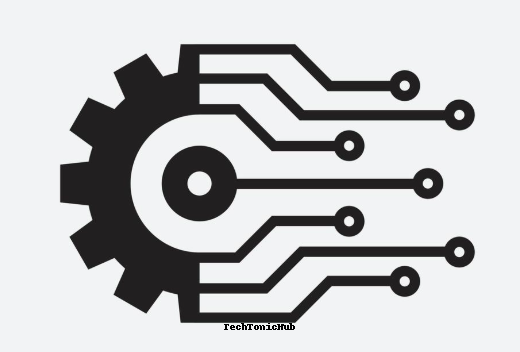Rapidly becoming a fixture in educational environments, AI promises increased administrative efficiency, customized learning experiences, and better student results. However, the use of artificial intelligence, like any transforming technology, also raises ethical, legal, and societal issues that require proper handling. The lawsuit involving Hingham High School has grown to be a crucial case study in negotiating these complexities, clarifying the hazards, advantages, and controversial questions about artificial intelligence in the classroom Hingham High School AI Lawsuit.
Overview of the Hingham High School AI Lawsuit
Because of its emphasis on the role artificial intelligence plays in determining disciplinary policies within the educational system, the Hingham High School AI case has attracted a lot of interest. Supported by human rights and technology law organizations, a group of parents and kids filed a complaint, alleging that the school’s use of an artificial intelligence system to forecast dangerous behavior among children resulted in biased and unjust disciplinary proceedings.
Parties and Background
The plaintiffs in the lawsuit are parents and students who claim that the AI system falsely marked some of their children as high-risk, leading to punitive actions without sufficient proof. These steps, they contend, unfairly treated the pupils and violated their rights.
On the other hand, Hingham High School and the AI technology firm responsible for the program are defending the tool, asserting its use to enhance student well-being and school safety. They assert that the system served as a tool for early intervention instead of punitive actions, and they implemented protections and supervision measures. Meanwhile, they face accusations of algorithmic bias, violating data and privacy, and exploiting artificial intelligence in academic settings Hingham High School AI Lawsuit.
The case, currently in its early stages of litigation, raises more general concerns about the use of artificial intelligence in educational settings and its potential to both enhance and disrupt the environment.
Key Issues in the Lawsuit
- The case focuses on a number of important questions, including:
- Fairness and Bias: This refers to the question of whether the artificial intelligence system’s prediction algorithms were biased, leading to unfair outcomes for certain students.
- Privacy and Data Security: There have been claims that the data-collection methods of the AI system have compromised student privacy, thereby exposing critical information to potential exploitation.
- Ethical Consequences: Labelling and stigmatising pupils based on artificial intelligence forecasts could potentially harm their academic experience and emotional well-being.
- Control and Monitoring: Are there concerns regarding the implementation of appropriate measures to ensure responsible use of artificial intelligence technology in educational institutions?
- Legal Grounds: The plaintiffs contend the school system violated civil rights and educational regulations by depending on a technology tool without responsibility and openness.
Recent Updates
In response to the lawsuit, Hingham High School has formally refuted the claims and defended the artificial intelligence system as in line with the highest standards for student safety. The answer emphasizes certain systems meant to track and control the use of artificial intelligence, including regulations for data security and risk assessment criteria.
The plaintiffs’ legal team has, in the meantime, asked for further research on the evolution of the system, its policies for failing students, and other cases wherein forecasts resulted in disciplinary measures. These changes provide the ground for a closer look at the functioning and influence of the artificial intelligence system, as the course of the case depends much on expert opinions.
The Role of AI in Education
Analyzing the Hingham High School example depends on understanding the larger background of artificial intelligence in education. Although their use presents opportunities as well as hazards, artificial intelligence technologies have changed the environment of learning.
Applications of AI in Education
Analyzing the Hingham High School example depends on understanding the larger background of artificial intelligence in education. Although their use presents opportunities as well as hazards, artificial intelligence technologies have changed the environment of learning.
Applications of AI in Education
AI tools in academic settings aim to streamline processes and enhance learning experiences. Key applications include:
Applications of AI in Education
AI tools in academic settings aim to streamline processes and enhance learning experiences. Key applications include:
Predictive Analytics
Software designed to identify students at risk of falling behind or exhibiting harmful behavior. These tools claim to help educators intervene early.
Behavior Monitoring
AI systems can detect signs of disruption or emotional distress in students, often through surveillance or analysis of digital interactions.
Personalized Learning Platforms
AI adapts coursework to match an individual student’s learning speed, style, and needs, offering a tailored educational experience.
Automated Grading Systems
Software reduces grading time by assessing written or objective responses, providing consistent feedback quickly.
Administrative Support
Chatbots can assist in answering students’ administrative queries, freeing staff time for more complex issues.
School Security Systems
Some AI systems use facial recognition or behavior analysis to enhance campus security, aiming to ensure a safer environment.
Impact on Students and Educators
Benefits:
it can save educators time, enhance personalized learning, and improve decision-making by offering data-driven insights.
Challenges:
Critics warn of over-reliance on AI tools, potential bias, and the erosion of trust if students feel overly monitored or unfairly targeted.
Allegations Against Hingham High School
The specific claims in the lawsuit expose several concerns. it can also express concern that the system’s design may have involved data collection practices that violated privacy regulations, such as those mandated by FERPA (Family Educational Rights and Privacy Act).
The legal grounds for the case emphasize the importance of upholding students’ civil rights and ensuring that technological tools used in education do not discriminate against or stigmatize individuals unfairly.
The Implementation of AI at Hingham High School
The sequence of events leading to the lawsuit began with the school’s adoption of an AI-driven system designed to enhance safety and well-being initiatives. The system analyzed behavioral data and flagged students deemed high-risk for harmful actions. While this approach was promoted as an early intervention tool, its implementation has sparked criticism.
Concerns emerged over the transparency of the criteria used for flagging students and allegations that punitive actions were disproportionally based on algorithmic results without adequate human oversight. These claims have ignited debates about whether the school’s process prioritized safety over student rights.
Broader Implications for Education
The lawsuit’s outcome could influence how AI is used in schools across the country. Some potential implications include:
Policy Changes:
Schools may adopt stricter regulations for implementing AI tools, including transparency requirements for algorithms and data usage policies.
AI Usage in Question:
Institutions may hesitate to adopt AI platforms for sensitive tasks like disciplinary predictions, opting for more human-driven approaches.
Legal Precedents:
The case may set a legal benchmark for how educational institutions are held accountable for AI-related decisions.
Parent and Student Advocacy:
Greater awareness may lead to increased advocacy for ethical use of AI and new expectations for schools to involve parents and students in these decisions.
Ethical and Legal Considerations
The ethical use of AI in education requires consideration of several factors:
Algorithmic Transparency:
Schools and AI developers must ensure the systems are explainable to reduce mistrust and potential inequity.
Privacy and Consent:
Students and their families should have clear rights regarding data collection and consent for AI tools.
Avoidance of Labeling:
Algorithms should minimize any potential harm caused by stigmatizing individuals unfairly.
Evaluation and Oversight:
AI tools must be continually monitored to address inaccuracies, bias, or misuse, promoting accountability for both schools and developers.
Responses to the Case
Reactions to the Hingham High School lawsuit have varied:
From the School:
Administrators have defended the AI system’s role in improving student safety and denied the allegations of misconduct.
Parents and Students:
Concerns from the community underscore the emotional toll of the allegations, with demands for greater transparency in how decisions are made.
Experts and Advocates:
Legal and technology experts have expressed divided opinions on the ethicality and reliability of such AI systems, with some calling for stricter controls.
Tech Companies:
Industry players have pointed to the potential of AI but acknowledged the need for strong ethical guidelines in its application.
Possible Outcomes and Precedents
The lawsuit might lead to several potential outcomes:
Strengthened Regulations:
Schools may face stricter rules regarding data collection and algorithmic accountability.
Revised Practices:
Institutions may shift toward human oversight in AI-driven decisions, avoiding sole reliance on algorithms.
Broader Adoption:
If resolved favorably for Hingham High School, more schools might see AI as a validated tool for safety.
Legal Risk Awareness:
Future AI-related education programs might proactively address legal vulnerabilities.
A Balanced AI Future in Education
The Hingham High School AI lawsuit serves as a pivotal moment in understanding the intersection of technology, ethics, and education. It underscores the need for clarity in how AI is used, the safeguards required to protect students, and the importance of striking a balance between innovation and responsibility.
Recommendations for Responsible AI Integration:
Schools interacting with parents, students, and stakeholders should use AI systems to foster openness and confidence.Technology developers must prioritize ethical AI designs to ensure justice and privacy from the outset.Legislators should establish clear rules for the use of artificial intelligence in education to protect students’ rights and advance technical development simultaneously.These important actions will pave the way for a future where technology empowers people while respecting their rights and dignity, as artificial intelligence continues to transform education.




